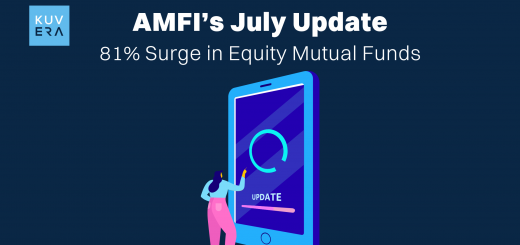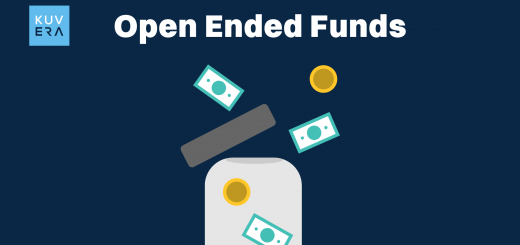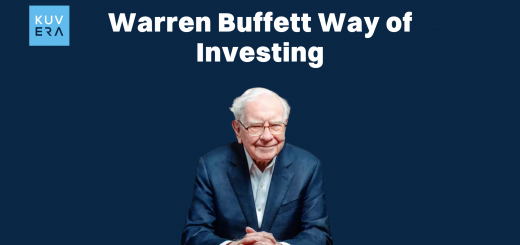Gold has long held a revered position in Indian culture and in investment portfolios, serving not just as a symbol of wealth but also as a crucial hedge against inflation and economic uncertainty. As we navigate the investment landscape of 2025, many investors are keen to understand where the opportunities lie within this timeless asset. While physical gold presents its own set of considerations like storage and purity, gold funds offer a convenient and diversified way to gain exposure to the yellow metal. For those seeking stability and portfolio diversification, identifying the top gold funds becomes a strategic imperative.
Let us explore the dynamics influencing gold’s performance and highlight main aspects of investing in top gold mutual funds in 2025.
The Allure of Gold in 2025’s Landscape
Gold’s appeal as a “safe haven” asset truly shines during periods of market volatility and economic uncertainty. As of mid-2025, global economic signals, geopolitical tensions, and shifting monetary policies continue to exert influence on commodity markets. Recent trends suggest a persistent interest in gold, driven by factors such as:
1. Inflationary Pressures
Persistent inflation concerns in various economies can boost gold’s attractiveness, as it historically preserves purchasing power better than fiat currencies during such times.
2. Geopolitical Instability
Conflicts, trade disputes, and political unrest across the globe often prompt investors to seek the perceived safety of gold, leading to increased demand.
3. Central Bank Policies
Expectations around interest rate movements, particularly from major central banks like the U.S. Federal Reserve, heavily influence gold prices. A dovish stance or anticipated rate cuts tend to make non-yielding gold more appealing.
4. Currency Fluctuations
A weakening U.S. dollar, in which gold is typically denominated, often makes gold more affordable for international buyers, thereby increasing demand and price.
5. Increased Central Bank Buying
Consistent purchases by central banks globally provide a strong underlying demand for gold, offering a floor to its prices.
These macroeconomic factors contribute to gold’s enduring role as a diversifier in an investment portfolio. Many financial experts continue to recommend a strategic allocation to gold, typically around 10-15% of a portfolio, to mitigate overall risk and provide a buffer during market downturns. This allocation strategy often involves exploring the top gold funds.
How Gold Funds Operate in India
Before delving into specific recommendations for the top gold mutual funds, it proves beneficial to understand how these investment vehicles function. Gold funds in India primarily come in two forms:
1. Gold Exchange-Traded Funds (ETFs)
These funds aim to track the domestic price of physical gold. Each unit of a Gold ETF typically represents a small quantity of physical gold (e.g., 1 gram or 0.5 gram) of high purity (99.5%). Gold ETFs trade on stock exchanges like regular shares, meaning you need a Demat account and a trading account to buy or sell them. Their prices fluctuate throughout the trading day based on the live gold price.
2. Gold Fund of Funds (FoFs)
These are mutual fund schemes that do not directly hold physical gold. Instead, they invest in Gold ETFs. This structure provides a simpler way for investors to gain gold exposure without needing a Demat account. You can invest in Gold FoFs through regular mutual fund channels, including Systematic Investment Plans (SIPs) or lump sum investments.
Both types can offer convenience, eliminate concerns about storage and purity associated with physical gold, and provide high liquidity. They also generally come with professional management, tracking gold prices efficiently.
Navigating the Search for Top Gold Funds in 2025
Identifying the top gold funds for investment in 2025 requires a multi-faceted approach. While past performance offers no guarantee of future results, it does provide insight into a fund’s efficiency and management. Key metrics for evaluation include:
1. Expense Ratio
This represents the annual fees charged by the fund house for managing the fund. Lower expense ratios generally mean more returns for the investor. For gold ETFs, expense ratios are usually lower than FoFs because FoFs incur charges both at the FoF level and the underlying ETF level.
2. Tracking Error
For Gold ETFs, a lower tracking error indicates how closely the fund’s performance matches the actual price of physical gold. A minimal tracking error suggests efficient management.
3. Liquidity (for ETFs)
High trading volumes for Gold ETFs ensure that you can easily buy or sell units at fair market prices when needed.
4. Assets Under Management (AUM)
A larger AUM often suggests higher investor confidence and better economies of scale for the fund house.
5. Fund House Reputation
Consider the track record and reputation of the Asset Management Company (AMC) offering the fund.
Factors Influencing Gold Fund Performance in 2025
Several critical factors will likely shape the performance of top gold mutual funds throughout 2025:
1. Monetary Policy Shifts
Decisions by global central banks, particularly the U.S. Federal Reserve, on interest rates will significantly impact gold. If interest rates remain high or increase, the opportunity cost of holding non-yielding gold rises, potentially tempering its ascent. Conversely, rate cuts can boost gold’s appeal.
2. Geopolitical Developments
Ongoing conflicts and political uncertainties in key regions can trigger safe-haven buying, pushing gold prices upward.
3. Inflationary Outlook
The trajectory of inflation will continue to be a dominant factor. Sustained high inflation makes gold a more attractive hedge.
4. USD Strength
A stronger U.S. dollar can make gold more expensive for international buyers, potentially exerting downward pressure on prices, while a weaker dollar can do the opposite.
5. Investment Demand
The behaviour of institutional investors, including central banks and large funds, along with retail investment demand through ETFs and FoFs, plays a crucial role. A significant surge in inflows into gold-backed instruments could drive prices higher.
Top Gold Funds to Monitor in 2025
Based on consistent performance, reasonable expense ratios, and strong fund management, certain gold funds have historically attracted investor interest. It is important to conduct your own research or consult a financial advisor before making any investment decisions. The following are examples of top gold funds that typically appear in discussions regarding this asset class and may be worth monitoring:
- Nippon India ETF Gold BeES: This has been one of the oldest and largest gold ETFs in India, known for its high liquidity and typically lower expense ratio.
- HDFC Gold ETF: Another prominent player in the gold ETF space, often featuring a competitive expense ratio and strong AUM.
- ICICI Prudential Gold ETF: This ETF from a major fund house also maintains a significant market presence and aims to closely track gold prices.
- SBI Gold Fund ETF / SBI Gold FoF: As a fund of funds, the SBI Gold Fund invests in its underlying SBI Gold ETF, providing a convenient way to invest without a Demat account.
- Axis Gold Fund (FoF) / Axis Gold ETF: This fund house offers both an ETF and a FoF, catering to different investor needs and often showing competitive performance.
- Kotak Gold Fund (FoF) / Kotak Gold ETF: Known for its systematic approach, Kotak offers robust options for gold exposure.
When evaluating these or any other gold funds, you should look beyond just one-year returns. Consider their performance over 3-year, 5-year, and even 10-year periods to assess consistency through various market cycles. Also, always check the direct plan options, which generally have lower expense ratios than regular plans.
Risks in Gold Funds
While gold funds offer diversification and a hedge against inflation, they are not without risks. Investors should consider:
1. Market Risk
The value of gold funds directly correlates with the price of physical gold. Fluctuations in global gold prices, influenced by economic data, geopolitical events, and currency movements, can lead to capital losses.
2. No Passive Income
Unlike equity funds that may offer dividends, or debt funds that provide interest, gold funds do not generate regular income. Returns come solely from capital appreciation.
3. Expense Ratios
While generally low, the expense ratio can slightly erode returns over the long term, especially in comparison to holding physical gold.
4. Liquidity Risk (for less popular ETFs)
While top gold funds in ETF form typically offer high liquidity, lesser-traded ETFs might experience wider bid-ask spreads, impacting your entry and exit prices.
Wrapping Up
For investors seeking to diversify their portfolios and protect against economic uncertainties, top gold funds present a compelling avenue. Gold’s historical role as a safe haven, coupled with the convenience and liquidity offered by gold ETFs and FoFs, makes it an attractive investment in 2025’s evolving financial landscape. While the gold market experiences its own fluctuations, a disciplined investment approach through top gold mutual funds can provide valuable stability and growth potential. As with any investment, thorough research and aligning your choices with your personal financial goals and risk tolerance remain paramount.
Interested in how we think about the markets?
Read more: Zen And The Art Of Investing
Watch here: Learn about the F&O craze in India












